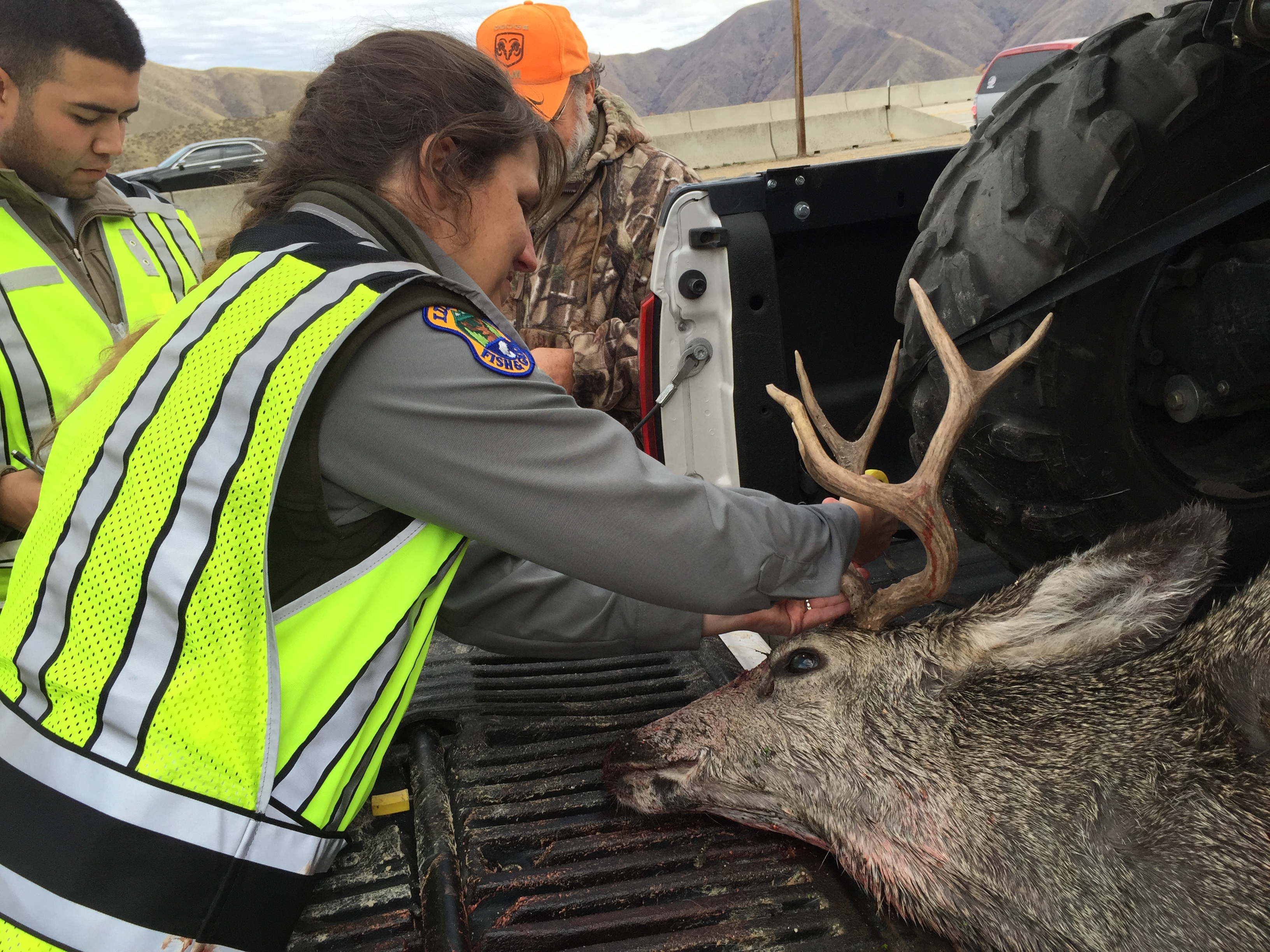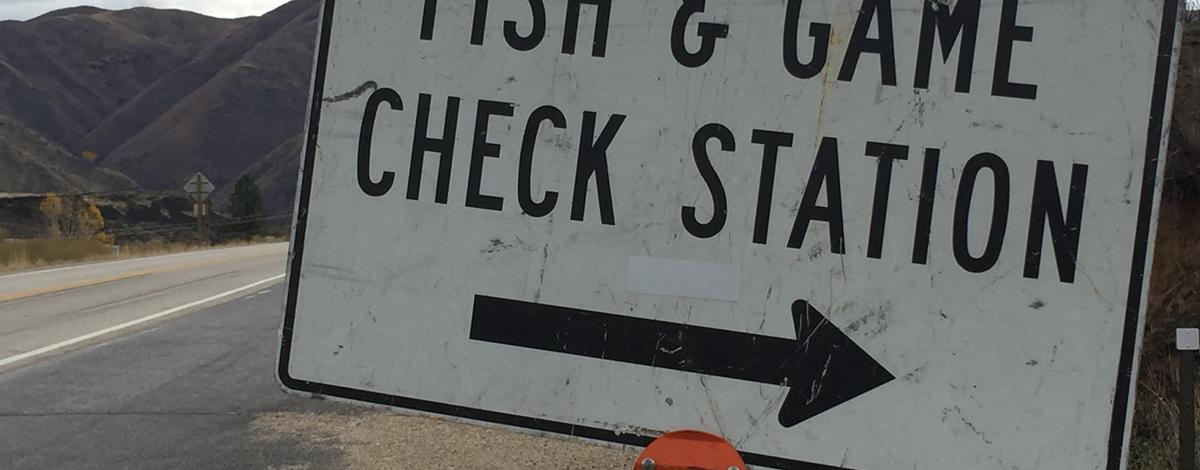Check stations are an opportunity for Fish and Game staff to talk to thousands of hunters and see thousands of harvested animals. Hunters should feel free to ask questions, too. The goal is for Fish and Game personnel to get the information needed to see what's happening in the field and also answer questions, and quickly get people back on their way.

If you did not harvest game
Staff will ask you some question and quickly get you back on your way. Remain in your vehicle to maintain Covid safety.
If you have harvested game
Fish and Game staff will want to look at the animal, and your license and tag. It will save you and everyone's time if the animal is easily accessible. It takes a few minutes to collect all the needed data, and Fish and Game staff is asking people to stay in their vehicles for Covid safety.
Staff may ask to take a sample of big game animals to test for chronic wasting disease, which has not been detected in Idaho, but it's neighboring states and Fish and Game staff is being vigilant about monitoring for it.
Many check stations are “management stations” where the main goal is to collect data from harvested animals. However, staff will also pay attention to any rule violations.
Common violations to avoid
Year after year, staff manning check stations see repeated mistakes, which may result in a reminder, a written warning or a citation. Hunters can avoid that situation by brushing up on these common errors:
- Failure to keep evidence of sex
Even in either-sex hunts, the head or other evidence of sex needs to be naturally attached to the carcass until you get it home. In hunts with antler-point restrictions, the antlers must accompany the carcass. For more information about preserving evidence of sex see page 102 of the Big Game Seasons and Rules booklet. - Failure to properly validate your tag
Make sure the notches for the correct day and month are fully removed from your tag immediately after you harvest the animal. The tag must be attached to the largest part of the carcass. Again, completely notch the tag. A slice through the day and date won't cut it. - Failure to have a proxy statement
One is issued with your tag, and if you’re transporting game for someone else, you must have a proxy statement. Proxy statements are also available on page 102 in the Big Game Seasons and Rules booklet, along with other important rules. - Maintain proof of species
In seasons restricted to mule deer or white-tail deer only, proof of species must remain naturally attached. If you remove the head, you must leave the fully-haired tail attached.
Here's more information.

